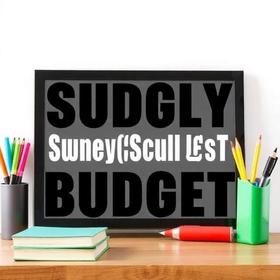For the 2025-26 school year, there are 4 public high schools serving 931 students in Fairmont, MN.
The top-ranked public high schools in Fairmont, MN are Fairmont Jr./sr. High School, Southern Plains Area Learning Cntr. and Southern Plains Bridges. Overall testing rank is based on a school's combined math and reading proficiency test score ranking.
Fairmont, MN public high schools have an average math proficiency score of 32% (versus the Minnesota public high school average of 36%), and reading proficiency score of 44% (versus the 51% statewide average). High schools in Fairmont have an average ranking of 4/10, which is in the bottom 50% of Minnesota public high schools.
Fairmont, MN public high school have a Graduation Rate of 78%, which is less than the Minnesota average of 83%.
The school with highest graduation rate is Fairmont Jr./sr. High School, with 85-89% graduation rate. Read more about public school graduation rate statistics in Minnesota or national school graduation rate statistics.
Minority enrollment is 25% of the student body (majority Hispanic), which is less than the Minnesota public high school average of 37% (majority Hispanic and Black).
Best Public High Schools in Fairmont, MN (2025-26)
School
(Math and Reading Proficiency)
(Math and Reading Proficiency)
Location
Quick Facts
Rank: #11.
Fairmont Jr./sr. High School
(Math: 33% | Reading: 45%)
Rank:
Rank:
4/
Bottom 50%10
900 Johnson St
Fairmont, MN 56031
(507) 238-4411
Fairmont, MN 56031
(507) 238-4411
Gr: 7-12 | 844 students Student-teacher ratio: 18:1 Minority enrollment: 25%
Rank: #22.
Southern Plains Area Learning Cntr.
Alternative School
(Math: ≤20% | Reading: <50%)
Rank:
Rank:
4/
Bottom 50%10
1200 North Park Street
Fairmont, MN 56031
(507) 238-1472
Fairmont, MN 56031
(507) 238-1472
Gr: 8-12 | 59 students Student-teacher ratio: 12:1 Minority enrollment: 25%
Rank: #33.
Southern Plains Bridges
Special Education School
(Math: ≤20% | Reading: 21-39%)
Rank:
Rank:
2/
Bottom 50%10
1200 North Park Street
Fairmont, MN 56031
(507) 238-1472
Fairmont, MN 56031
(507) 238-1472
Gr: K-12 | 23 students Student-teacher ratio: 5:1 Minority enrollment: 18%
Rank: n/an/a
Positive Approach To Learning
Special Education School
1200 North Park Street
Fairmont, MN 56031
(507) 238-1472
Fairmont, MN 56031
(507) 238-1472
Gr: K-12 | 5 students Student-teacher ratio: 5:1
Fairmont, Minnesota Public Schools (Closed)
School
Location
Quick Facts
1001 Albion Ave
Fairmont, MN 56031
(507) 235-9874
Fairmont, MN 56031
(507) 235-9874
Gr: K-2 | 346 students Student-teacher ratio: 13:1 Minority enrollment: 13%
1200 N. Park St.
Fairmont, MN 56031
(507) 235-9294
Fairmont, MN 56031
(507) 235-9294
Gr: 3-4 | 257 students Minority enrollment: 9%
Southern Plains Targeted Services (Closed 2009)
Alternative School
115 S Park Street
Fairmont, MN 56031
(507) 235-6151
Fairmont, MN 56031
(507) 235-6151
Frequently Asked Questions
What are the top-ranked public high schools in Fairmont, MN?
The top-ranked public high schools in Fairmont, MN include Fairmont Jr./sr. High School, Southern Plains Area Learning Cntr. and Southern Plains Bridges.
How many public high schools are located in Fairmont?
4 public high schools are located in Fairmont.
What is the racial composition of students in Fairmont?
Fairmont public high schools minority enrollment is 25% of the student body (majority Hispanic), which is less than the Minnesota public high schools average of 37% (majority Hispanic and Black).
Recent Articles

Public School Open House & Enrollment Season Guide
A parent-focused guide to the public school open house and enrollment season, with expert questions, timelines, and decision tips.

School Supply Budget 2026: Fees, Books, Tech Costs
School Supply Budget 2026 guide for parents, covering fees, textbooks, technology, and hidden extras to plan ahead.

Education Funding in America (2025 Update)
Comprehensive 2025 update on public school funding in America, new federal and state policies, per-pupil spending, and equity challenges.
